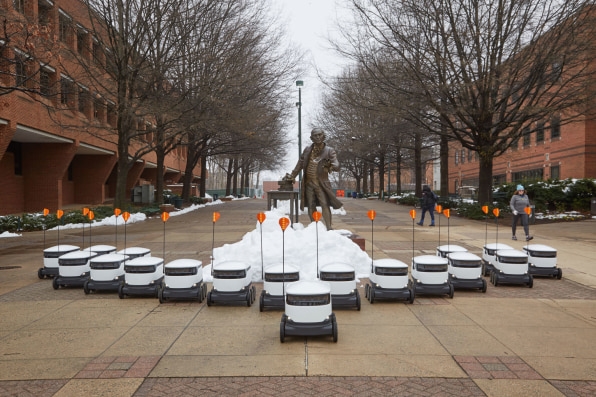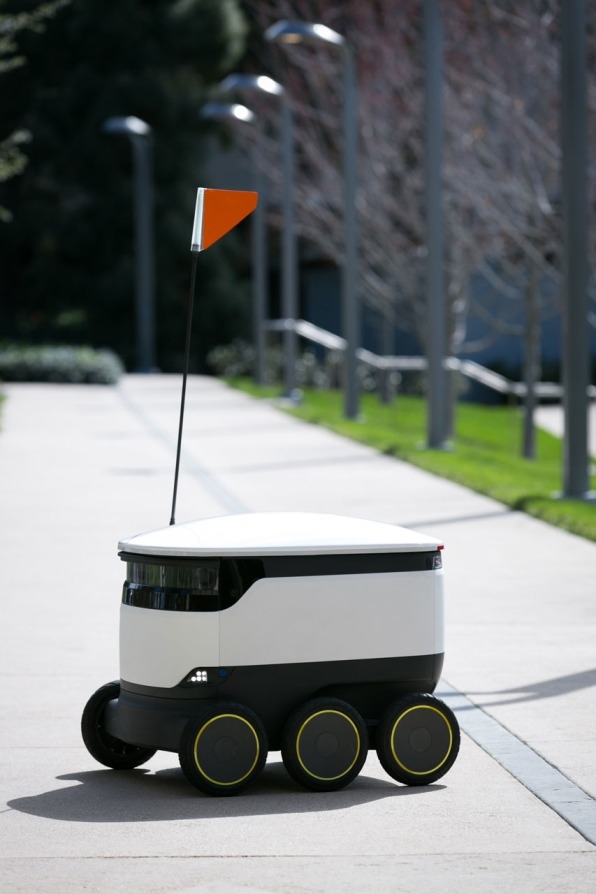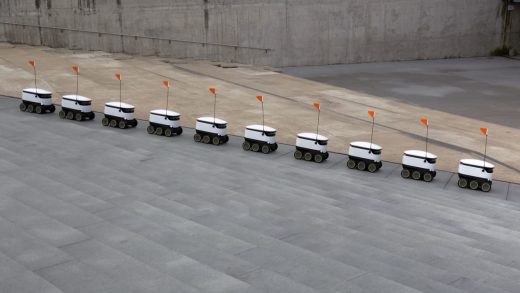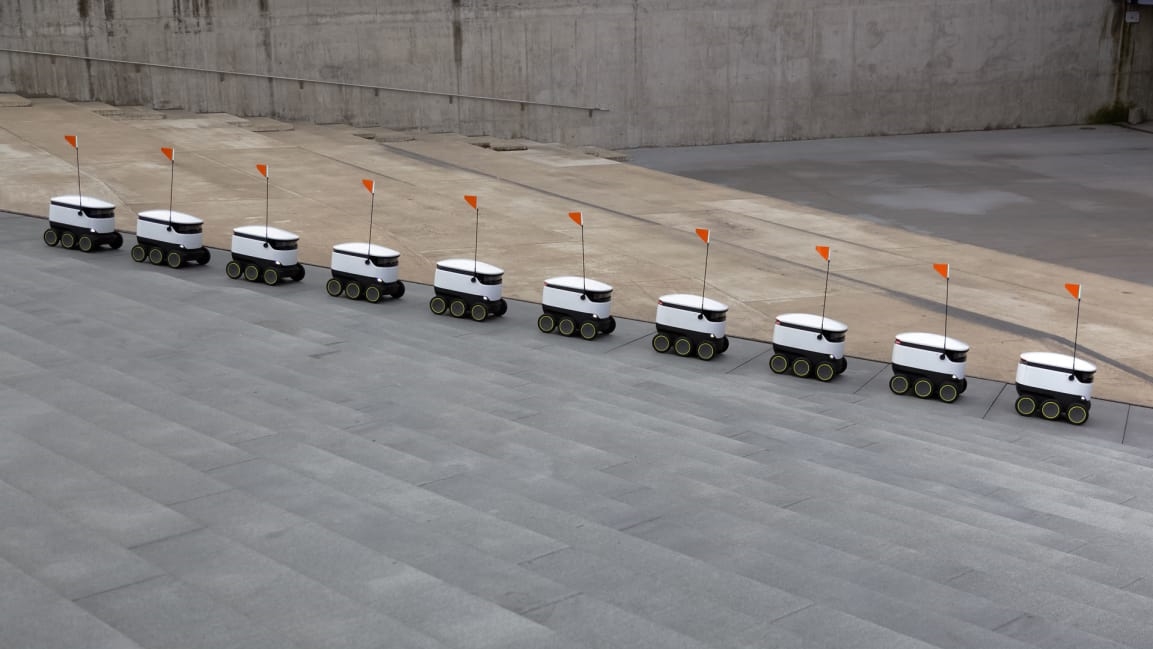These cute little robots now deliver late-night snacks to world’s luckiest college kids
When students at George Mason University in Fairfax, Virginia want a late-night coffee or meal, they’ll no longer have to walk across campus: The school now has a fleet of 25 delivery robots.

Via an app–and using their student dining plans–students can order food from on-campus retailers including a grocery store and the local Starbucks, and drop a pin on the app’s map to show where they want to get the delivery. Within 15 minutes or less, one of the tiny robots, which can each carry up to 20 pounds, will bring them the food. When the robot arrives, the student uses the app to unlock it.

A campus may be an ideal early use case for the technology; students have limited time and often don’t have cars. They’re also open-minded. “I think students are really comfortable with technology and are embracing the changing world,” says Lex Bayer, CEO of Starship Technologies, the company that makes the robots and partnered with the food service company Sodexo to bring it to the university.
The robots are also already in use at Intuit’s corporate campus in the Bay Area, as well as north of London in the town of Milton Keynes, where they now deliver groceries and packages to around 5,000 homes. Using a suite of sensors, including 10 cameras, ultrasound, and radar, and using artificial intelligence to make decisions, the bots can navigate through the city autonomously. “They’re navigating sidewalks, and crossing streets, and [avoiding] dumpster trucks and construction and animals and bicyclists,” says Bayer. “It’s amazing to see.” They work in the dark and in both rain and snow. The company claims that the robots have been well received by the community, even as other robots elsewhere are beaten up; the shape was designed to look non-threatening, and the robots politely pick a side of the sidewalk to try to avoid annoying pedestrians.
Starship envisions a world in which the little electric robots can replace cars for many deliveries in cities everywhere, helping cut traffic and pollution. “They’re not putting fossil fuels into the atmosphere,” says Bayer. “It’s one of these things that if you step back and think about it, right now, we have other services in the world with a human being and a 3,000-pound vehicle driving a burrito around to deliver it to a person. And that model just doesn’t make sense.”
(36)



